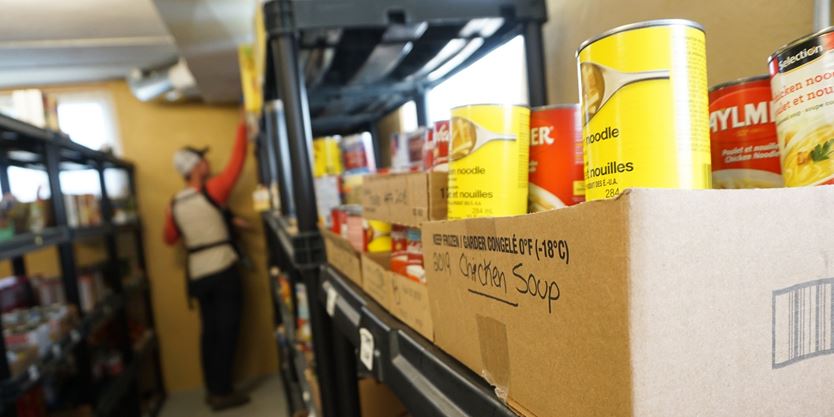For the millions of Canadians who use cannabis, there are just 64 days left until they can light up a joint, inhale and breathe easy knowing that they are staying comfortably within the confines of the law.
But even after Oct. 17, when cannabis becomes legal, marijuana users who get behind the wheel will find themselves veering back into murky legal territory. While there may be new drugged driving laws on the books — and saliva testing devices heading soon to a police cruiser near you — critics say the legal landscape is still hazy for marijuana users who drive, with the potential to criminalize people who are not actually impaired.
Canadian regulators have now legal limits for blood concentrations of THC, the main psychoactive compound in marijuana — even though researchers say there is no direct relationship between impairment and specific levels of THC in the bloodstream. Critics have also pointed to potential issues with roadside saliva testing devices, which were not designed with Canadian winters in mind and require internal temperatures of at least 4 C to work.
Civil liberties advocates now worry the government has adopted a “zero tolerance” approach based on inconclusive science. They fear that sober people will end up receiving criminal records — and those at greatest risk will be medical cannabis users and racialized communities that are already over-policed, said Rob De Luca with the Canadian Civil Liberties Association.
“It’s going to criminalize a host of individuals who are basically going about their day, thinking they’re doing completely legal behaviour,” said De Luca, director of the CCLA’s public safety program. “The impact of bringing the full weight of the state and the criminal justice system against someone who may not have been impaired behind the wheel — that’s a remarkable thing.”
Critics like De Luca do not question the dangers of drug-impaired driving or the importance of taking public safety into account. Studies have shown that cannabis can and organizations like Mothers Against Drunk Driving have come out strongly in support of Canada’s new impaired driving laws.
Studies have also shown a after cannabis use, with some papers suggesting . A recent Statistics Canada survey also found that with a driver’s licence admitted to getting behind the wheel within two hours of consuming the drug.
But regulating cannabis is a much trickier proposition than regulating alcohol, which has now been thoroughly studied for decades. Alcohol is a simple molecule that eliminates from the body at a constant rate; cannabinoids like THC have complicated metabolic pathways and get stored in fat, releasing at different rates.
Frequent, chronic users — such as medical cannabis users — can also develop tolerance. And they can test THC positive for much longer periods than occasional smokers; , which looked at 30 men who were daily cannabis smokers, found that two people were still THC-positive 30 days after their last toke, albeit at low blood concentrations.
There is plenty of evidence that a person with a blood alcohol concentration of more than 0.08, Canada’s legal limit, is clearly impaired. But cut-off points are harder to generalize for cannabis users because THC affects everyone so differently, depending on a variety of factors — everything from a person’s history of cannabis use to the amount of fat tissue they have in their bodies.
“It makes it very complex to evaluate what a blood concentration means in terms of someone’s performance or behaviour,” said Dayong Lee, a toxicology manager with the Houston Forensic Science Center who has studied cannabis and impairment.
But Canadian regulators have decided to impose blood concentration limits for THC, even while acknowledging that “science is unable to provide general guidance to drivers about how much cannabis should be consumed before it is unsafe to drive or before the proposed levels would be exceeded.”
It is now illegal for Canadian drivers to have blood THC concentrations of five nanograms (ng) per millilitre or more — a crime that carries mandatory penalties of $1,000 and jail time for repeat offenders. Drivers with at least 2.5 ng/ml of THC in their blood, combined with low levels of alcohol, will also be charged.
Regulators have also made it a summary offence to have concentrations of between two and five nanograms per millilitre of blood. Offenders receive a maximum fine of $1,000 and a criminal record, which they can apply to suspend only after five years.
“The government should take every public safety approach that’s appropriate, but they shouldn’t take it when the scientific foundation is not clear,” said Kyla Lee, a Vancouver lawyer who defends impaired driving cases. “Meanwhile, people (will be) getting criminal records for drugs, which will render them inadmissible to the United States and have all sorts of consequences for employment, families, life insurance, etc.”
According to Dayong Lee, the cut-off points of two and five nanograms per millilitre are based on a handful of studies in which the majority of people showed some cognitive impairment at these concentrations. But these studies are based on relatively small populations and “it’s hard to generalize” their results, she said.
“I can think of less than 10 studies that support the five nanograms being impaired,” Lee said. “It’s really critical that drug blood concentration itself is not being used solely to demonstrate that this person is impaired.”
Forensic toxicologist Marilyn Huestis agrees. During her two decades with the U.S. National Institute on Drug Abuse, she conducted numerous studies looking at cannabis impairment and was “amazed” to find that in , she could still detect signs of impairment even three weeks after their last usage.
But she has yet to see a significant correlation between specific blood drug concentrations and impairment. “My philosophy for identifying impaired driving … the first thing is that you show the person is really impaired. Because some people might have five (nanograms) or two (nanograms) and maybe they’re not impaired,” she said. “Then you do the biological sample to point (out) which drugs are causing the impairment.”
Yet, Canadian laws do not explicitly require drivers get tested for impairment before they can be charged with drug-impaired driving.
The Canadian government is also introducing new roadside devices that act as a kind of breathalyzer exam for drugs, including THC. But instead of blowing, drivers provide saliva samples that are tested on the spot using the same immunological technology as pregnancy sticks.
These devices can reveal whether specific drugs might be present, but further tests are needed to confirm blood concentration levels. The first device being considered for Canadian approval is the Draeger DrugTest 5000, which has received early criticism for requiring an internal temperature of at least 4 C. “Lots of Canada, lots of the time, is below four degrees Celsius,” Kyla Lee said.
In an email, Draeger Canada said its technology is “well suited to Canada, with internal temperature control functionality that helps ensure optimal performance in a broad range of conditions” but was unable to respond to followup questions by press time.
Huestis said she’s tested the Draeger DrugTest 5000 and it “works very well.” The device is already in use in countries like Australia and Spain, and in Norway, police apprehensions of DUI drivers more than doubled after the device was introduced, .
But other jurisdictions have reported lacklustre experiences with the device. According to tender documents, the Irish government anticipated that 50,000 tests would be performed with the device every year. Last year, however, police only used it on 612 drivers, with 90 testing positive for drug use.
A senior police officer that the length of time required to use the device — at least 10 minutes — was a deterrent for officers, who opted to focus on alcohol detection instead. He said some officers also struggled to get usable saliva samples from nervous drivers, whose mouths would dry up.
According to a federal Department of Justice spokesperson, the Draeger DrugTest 5000 was recommended for approval by the Canadian Society of Forensic Science, which is also evaluating a number of other drug screeners. The device is now undergoing a 30-day “public comment period” that closes on Aug. 18, after which the attorney general will decide whether or not to approve it for use in Canada.






















